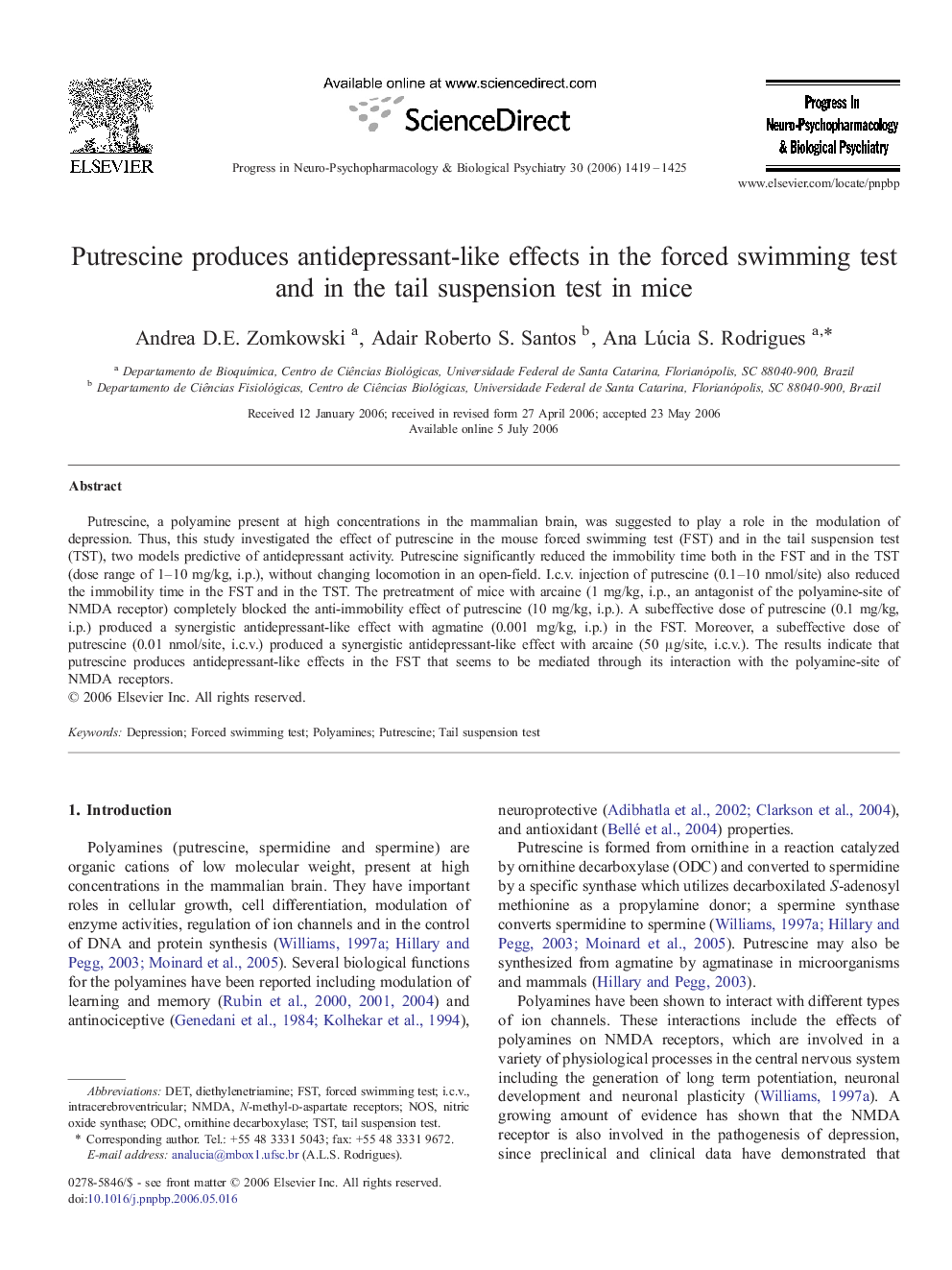| Article ID | Journal | Published Year | Pages | File Type |
|---|---|---|---|---|
| 2566689 | Progress in Neuro-Psychopharmacology and Biological Psychiatry | 2006 | 7 Pages |
Putrescine, a polyamine present at high concentrations in the mammalian brain, was suggested to play a role in the modulation of depression. Thus, this study investigated the effect of putrescine in the mouse forced swimming test (FST) and in the tail suspension test (TST), two models predictive of antidepressant activity. Putrescine significantly reduced the immobility time both in the FST and in the TST (dose range of 1–10 mg/kg, i.p.), without changing locomotion in an open-field. I.c.v. injection of putrescine (0.1–10 nmol/site) also reduced the immobility time in the FST and in the TST. The pretreatment of mice with arcaine (1 mg/kg, i.p., an antagonist of the polyamine-site of NMDA receptor) completely blocked the anti-immobility effect of putrescine (10 mg/kg, i.p.). A subeffective dose of putrescine (0.1 mg/kg, i.p.) produced a synergistic antidepressant-like effect with agmatine (0.001 mg/kg, i.p.) in the FST. Moreover, a subeffective dose of putrescine (0.01 nmol/site, i.c.v.) produced a synergistic antidepressant-like effect with arcaine (50 μg/site, i.c.v.). The results indicate that putrescine produces antidepressant-like effects in the FST that seems to be mediated through its interaction with the polyamine-site of NMDA receptors.
